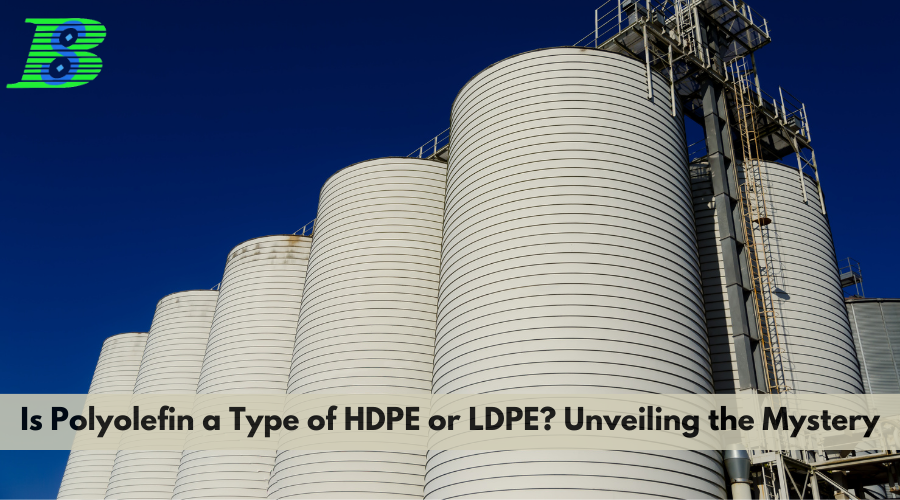Is Polyolefin a Type of HDPE or LDPE? Unveiling the Mystery

Welcome to the intriguing world of plastics, where innovation meets versatility. You're in the right place if you've ever wondered about the relationship between Polyolefin, HDPE (High-Density Polyethylene), and LDPE (Low-Density Polyethylene). In this extensive guide, we'll navigate these materials, shedding light on their properties, uses, and distinctions.
What is Polyolefin?
Polyolefin, a term that sounds complex, is relatively straightforward. It's not a specific type of plastic but a broad category encompassing several varieties, including HDPE and LDPE. Let's delve deeper into this versatile group.
Polyolefin Composition
Polyolefins are a family of synthetic polymers primarily made from petrochemicals. They are known for their unique molecular structure, consisting of long chains of hydrocarbon molecules. This structure imparts desirable flexibility, durability, and chemical resistance.
Types of Polyolefins
Within the realm of Polyolefins, HDPE and LDPE are two prominent members. These two materials share some similarities but also have distinct characteristics that set them apart.
Is Polyolefin a Type of HDPE?
This is a common question, and the answer is yes and no. Polyolefin is a broader category that encompasses HDPE. In other words, HDPE is a specific type of Polyolefin. To understand this better, let's take a closer look at HDPE.
HDPE: High-Density Polyethylene
HDPE stands for High-Density Polyethylene. It is a type of Polyolefin known for its high strength-to-density ratio. This means that HDPE is lightweight but incredibly sturdy, making it suitable for various applications.
HDPE Characteristics
- Density: HDPE lives up to its name with high density, resulting in exceptional strength.
- Flexibility: Despite its density, HDPE remains flexible, allowing it to withstand impact without cracking.
- Chemical Resistance: HDPE is highly chemical resistant and ideal for containers and pipes.
- Recyclability: It is environmentally friendly, as it can be recycled easily.
Is Polyolefin a Type of LDPE?
Now that we've explored the connection between Polyolefin and HDPE, let's focus on LDPE.
LDPE: Low-Density Polyethylene
LDPE, or Low-Density Polyethylene, is another type of Polyolefin. Unlike HDPE, LDPE has a lower density, resulting in notable differences.
LDPE Characteristics
- Flexibility: LDPE is more flexible than HDPE, making it suitable for applications where flexibility is essential.
- Transparency: It is transparent, making it ideal for packaging materials.
- Heat Resistance: LDPE can withstand lower temperatures compared to HDPE.
- Ease of Processing: It is relatively easy to process, which is beneficial in manufacturing.
Applications of Polyolefin, HDPE, and LDPE
Now that we've explored the distinctions between Polyolefin, HDPE, and LDPE, let's closely examine their applications.
Polyolefin Applications
Polyolefins find wide-ranging use in packaging, automotive, construction, and textiles. Their versatility and durability make them a preferred choice in various applications.
HDPE Applications
HDPE's exceptional strength and chemical resistance make it suitable for:
- Pipes: HDPE pipes are commonly used for water distribution and gas transportation.
- Bottles: Many plastic bottles, including milk jugs and detergent containers, are made from HDPE.
- Geomembranes: HDPE is used for lining landfills and ponds due to its impermeability.
LDPE Applications
LDPE's flexibility and transparency make it ideal for:
- Plastic Bags: Most plastic bags you encounter daily are made from LDPE.
- Packaging Films: LDPE is used for stretch films, food packaging, and shrink-wrap.
- Toys: It is a popular choice for making soft and squeezable toys.
FAQs
Can I recycle HDPE and LDPE together?
Yes, HDPE and LDPE can be recycled together, but the resulting material may have slightly different properties due to their inherent differences.
Is Polyolefin eco-friendly?
Polyolefins can be eco-friendly when adequately recycled. Recycling reduces the environmental impact and conserves resources.
Are HDPE and LDPE safe for food packaging?
HDPE and LDPE are considered safe for food packaging, as they are inert and do not leach harmful substances into food.
Which is better for outdoor applications, HDPE or LDPE?
HDPE is generally preferred for outdoor applications due to its superior durability and resistance to UV radiation.
Are there any health concerns related to the use of Polyolefins?
Polyolefins are considered safe for everyday use and do not pose health risks when used as intended.
Can I use LDPE for products that need to withstand extreme temperatures?
LDPE has limitations regarding extreme temperatures, so it may not be suitable for applications requiring high-temperature resistance.
Conclusion
Polyolefin is a type of plastic that encompasses many materials, including HDPE and LDPE. Each of these materials has its unique characteristics and applications. Understanding their differences can help you make informed choices in various industries, from packaging to construction. Whether you're considering environmental impact or performance, knowing the distinctions between Polyolefin, HDPE, and LDPE is a valuable asset.


